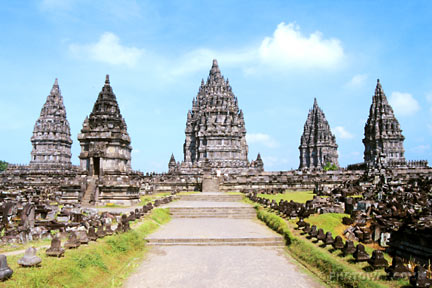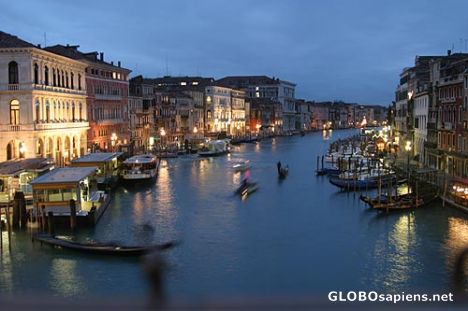
Impian Monalisa-For a long time, Ipoh, the capital of Perak state, has attracted mainly local day-trippers who visit the town in search of good dining spots. Granted that Ipoh boasts many delightful eating spots, there are still many other attractions worth checking out that warrant an overnight stay.
Ipoh’s development began with its thriving tin mining industry at the turn of the 19th century, when it was colonized by the British. During colonial times, Ipoh was Malaysia’s second city for administration purposes. Traces of colonial rule can be seen in several notable edifices, such as the railway station and the town hall.
Ipoh is divided into the Old and New Towns, which are separated by the Kinta River. In Old Town, you’ll find many pre-WWII shop-houses and heritage buildings such as the Ipoh Town Hall, while New Town has recently developed shops, office buildings, malls and housing estates. Recommended is a walking tour in Old Town, where you’ll see places like the Anglo-Chinese School, which is called SMK Methodist (ACS), located on Lahat Road.
The oldest and one of the most prestigious schools in Perak occupies a restored building with arresting colonial-era architectural qualities. St Michael’s Institution on Clayton Road (now Jl. S.P. Seenivasagam) was built in 1912.
During the Japanese occupation, the La Sallian school was used as the Japanese administration headquarters. Many shop-houses on Leech Street (now Jl. Bandar Timah) still maintain their old-world architectural significance, besides being popular spots for food and drinks.
Food haven

There is delicious food galore in Ipoh, which is famous for dishes such as Sar Hor Fun (from RM3, or less than US$1) -- flat white rice noodles in soup with shredded chicken and prawns. The Hor Hee (from RM3) – flat white rice noodles served with fish cakes and/or fish balls; Nga Choi Kai (from RM4) – chicken fillet with soy sauce served with a side dish of pepper bean sprouts; Hakka Mee (from RM3.50) – yellow rice noodles served with mince pork sauce; and Heong Peng (from RM1.50) – a type of biscuit – are irresistible.
Ipoh is also well known for “Ipoh white coffee” (from RM1). The unique brew is attributed to the roasting process, which involves combining elements of modern approaches with traditional Malaysian brewing practices. The term “white coffee” originates from the literal translation of its Chinese name. It was introduced in the 19th century by Chinese migrants who came to work in the tin mines.
Caves
After enjoying a meal or two, and luxuriating in a cuppa, move on and explore Ipoh’s many limestone caves, formed by to the surrounding karst formations.
Notable attractions include the Sam Po Tong (Cavern of Three Precious) Chinese temple built within a limestone cave, and outside the cave, you’ll come across a pond housing many tortoises.
The Perak Tong (Perak Cave), meanwhile, has a steep, tall staircase in the cave’s interior rising up to the top of its hill, from where you’ll be able to enjoy panoramic views of Ipoh and its surroundings. The Buddha statue in Perak Tong was the tallest and largest of its kind in Malaysia when first commissioned.

Also worth visiting is the Kek Lok Tong (Cavern of Utmost Happiness). The cave temple is located on the other side of the same range of limestone hills as Sam Poh Tong. The former is accessible from the Gunung Rapat housing area.
Compared to the aforementioned cave temples, which are regularly packed with locals and tourists, the Kek Lok Tong offers a more tranquil and cool environment and has the best scenic cave view.
Medical services
Medical tourism is also important for Ipoh’s economy. Some hospitals and clinics are equipped with top-notch facilities, making it ideal for locals and foreigners who seek quality medical treatment. Take for instance Ipoh Specialist Hospital – a top private hospital established by a team of 16 consultants in 1981 but which was acquired by the Johor State Economic Development Corporation in 1989. Ipoh Specialist Hospital is now a full service hospital that delivers state-of-the-art emergency, acute inpatient and outpatient care. More than 65 specialists work together with 490 employees to provide personalized care. The hospital has 28 resident doctors and 36 visiting doctors. ISH’s quality of service has been recognized in the form of an MS ISO 9002 awarded by SIRIM. In the new millennium, ISH earned the distinction of being the first hospital in Perak to have a cardiac center. For more info, visit http://www.ish.kpjhealth.com.my/
Travel Tips

- There’s one renowned coffee shop in Ipoh Old Town that brews great coffee in town. Called Sun Yuen Loong, the place also serves tea, toast, steamed bread in kaya and noodles. If you love the taste of Ipoh white coffee, you can take home some 3-in-1 instant white coffee sachets for friends and relatives. Among the best brands are Chek Hup Ipoh White Coffee King and Ipoh Old Town White Coffee.
- When you visit Ipoh, friends and relatives will inevitably ask you to buy a pomelo for them. While the prices of pomelos are not necessarily cheaper in Ipoh, the fruit here is fresher and therefore juicier. Apart from eating it cold and fresh, you can also make a delicious and healthy salad using pomelo.
- You can reach Ipoh from Kuala Lumpur by car, but highway toll is levied. Alternatively, you can take a bus. A bus to KL takes about two hours and costs RM15. To Singapore takes about eight hours and costs RM38.(TJP)




 Tamansari Swiming Pool
Tamansari Swiming Pool











































